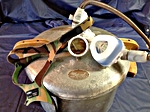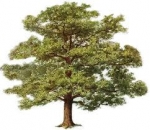Question on EPR
Question on EPR
I know the EPR is for comfortable breathing out. My question is; does the setting you choose for the EPR affect the therapy at all? If I have it set at 3, versus 1 or 2, am I getting the same therapy benefits as I would with the other two settings? I'd appreciate someone explaining that to me. Thanks.
_________________
| Mask: AirFit™ N30i Nasal CPAP Mask with Headgear Starter Pack |
| Humidifier: S9™ Series H5i™ Heated Humidifier with Climate Control |
| Additional Comments: MyAir app |
- StuUnderPressure
- Posts: 1378
- Joined: Mon Jun 18, 2012 10:34 am
- Location: USA
Re: Question on EPR
EPR reduces the pressure as you are exhaling.
Then the pressure is immediately restored to your pressure for the next inhale.
It does not compromise your therapy at all.
So, use it if you have trouble exhaling against your pressure.
It is a comfort feature though, and most people do not use EPR - simply because they do not have any problems exhaling against the pressure.
Then the pressure is immediately restored to your pressure for the next inhale.
It does not compromise your therapy at all.
So, use it if you have trouble exhaling against your pressure.
It is a comfort feature though, and most people do not use EPR - simply because they do not have any problems exhaling against the pressure.
_________________
| Machine: AirCurve™ 10 VAuto BiLevel Machine with HumidAir™ Heated Humidifier |
| Additional Comments: Cleanable Water Tub & Respironics Premium Chinstrap |
In Windows 10 Professional 64 bit Version 22H2 - ResScan Version 7.0.1.67 - ResScan Clinician's Manual dtd 2021-02
SD Card Formatter 5.0.2 https://www.sdcard.org/downloads/format ... index.html
SD Card Formatter 5.0.2 https://www.sdcard.org/downloads/format ... index.html
Re: Question on EPR
Thanks for the quick reply.
_________________
| Mask: AirFit™ N30i Nasal CPAP Mask with Headgear Starter Pack |
| Humidifier: S9™ Series H5i™ Heated Humidifier with Climate Control |
| Additional Comments: MyAir app |
-
Wulfman...
Re: Question on EPR
Yes, it can.2kittymom wrote:I know the EPR is for comfortable breathing out. My question is; does the setting you choose for the EPR affect the therapy at all? If I have it set at 3, versus 1 or 2, am I getting the same therapy benefits as I would with the other two settings? I'd appreciate someone explaining that to me. Thanks.
EPR drop the exhale pressure by the number of centimeters corresponding to the setting...... 1=1 cm, 2=2 cm, 3=3 cm.
For an example, if you're using a CPAP pressure setting of 10 cm and your EPR setting is 3, your "effective" pressure at the end of your exhale cycle is only 7 cm. If you actually NEED a pressure of 10 cm to keep your airway open, you would either need to turn off your EPR or compensate by increasing your CPAP pressure to 13 cm.
Hope that helps.
Den
.
Re: Question on EPR
I have experienced exactly what Wulfman describes. I had to turn off EPR.
Re: Question on EPR
Sorry, cannot understand it. The EPR is only exhale. The incoming pressure would be still without EPR? The airways would stay open because of the incoming air. Even with EPR on 3 the graph showed the higher pressure level, so I thought this would be ok.
_________________
| Mask: Eson™ Nasal CPAP Mask with Headgear |
| Humidifier: S9™ Series H5i™ Heated Humidifier with Climate Control |
Re: Question on EPR
bluesky I am confused too. I thought the EPR only affected exhale also and I don't understand why that would affect optimal pressure for reducing apneas. Maybe Wulfman will come back to this thread or someone more experienced will post...
_________________
| Mask: Swift™ FX For Her Nasal Pillow CPAP Mask with Headgear |
| Humidifier: S9™ Series H5i™ Heated Humidifier with Climate Control |
| Additional Comments: Sleepyhead software, Pressure 9-14, EPRx1, Pad-a-cheek barrel cozy, Resmed hose cover |
Re: Question on EPR
With the use of EPR and the reduction in pressure during exhale it is possible for the airway to try to collapse during the exhale phase if the pressure during exhale isn't quite enough to prevent it. It's possible...not a forgone conclusion that is it is going to work that way for everyone. It's easy to spot on the reports though and there's several ways to address the issue if it should happen.
Either decrease the EPR setting (or turn if off) or just increase the pressure just a little to allow that drop to not go quite so low.
Use EPR if it makes the breathing easier and you sleep better. Watch the software reports and if there are more events showing up than we would like to see...then worry about it and do something about it. It isn't a big deal and it is easily fixed.
Exhale pressure is important because the airway tissues can collapse during exhale and sometimes its just a little 1 cm difference that makes the difference when someone is right at the very least pressure that is needed to keep the airway open.
I like EPR. It allows for a more natural breathing and predictable rhythm and the brain likes predictability. Any time the brain just mulls along happy...we sleep better. So if you like the way it lets you breath...then use it. If your AHI is a little higher than you want then just increase the pressure a tiny bit and see if you get the results you want.
Using EPR doesn't always mean that the AHI is going to go sky high for everyone.
I gave cpap mode a try with my S9 VPAP a while back. I chose 13.6 cm with 3 EPR. Normally I used Auto adjusting pressures and my overall average was around 13 to 15 on the APAP machine. I was kind of worried about what would happen with 3 EPR...but it felt good to use it so I wanted to try. I didn't have any huge increase in AHI or anything else. Slept pretty much like usual.
My AHI was 0.38 and was the most boring report with 1 central and 1 apnea over 5 hours.
I probably could have tried lower fixed pressure and still had good results but at the time the machine was on loan to me so I was limited in time for my experiments.
Either decrease the EPR setting (or turn if off) or just increase the pressure just a little to allow that drop to not go quite so low.
Use EPR if it makes the breathing easier and you sleep better. Watch the software reports and if there are more events showing up than we would like to see...then worry about it and do something about it. It isn't a big deal and it is easily fixed.
Exhale pressure is important because the airway tissues can collapse during exhale and sometimes its just a little 1 cm difference that makes the difference when someone is right at the very least pressure that is needed to keep the airway open.
I like EPR. It allows for a more natural breathing and predictable rhythm and the brain likes predictability. Any time the brain just mulls along happy...we sleep better. So if you like the way it lets you breath...then use it. If your AHI is a little higher than you want then just increase the pressure a tiny bit and see if you get the results you want.
Using EPR doesn't always mean that the AHI is going to go sky high for everyone.
I gave cpap mode a try with my S9 VPAP a while back. I chose 13.6 cm with 3 EPR. Normally I used Auto adjusting pressures and my overall average was around 13 to 15 on the APAP machine. I was kind of worried about what would happen with 3 EPR...but it felt good to use it so I wanted to try. I didn't have any huge increase in AHI or anything else. Slept pretty much like usual.
My AHI was 0.38 and was the most boring report with 1 central and 1 apnea over 5 hours.
I probably could have tried lower fixed pressure and still had good results but at the time the machine was on loan to me so I was limited in time for my experiments.
_________________
| Machine: AirCurve™ 10 VAuto BiLevel Machine with HumidAir™ Heated Humidifier |
| Additional Comments: Mask Bleep Eclipse https://bleepsleep.com/the-eclipse/ |
Last edited by Pugsy on Mon Sep 02, 2013 5:29 am, edited 1 time in total.
I may have to RISE but I refuse to SHINE.
-
Wulfman...
Re: Question on EPR
I think Pugsy explained it pretty well.oak wrote:bluesky I am confused too. I thought the EPR only affected exhale also and I don't understand why that would affect optimal pressure for reducing apneas. Maybe Wulfman will come back to this thread or someone more experienced will post...
If apneas occur due to a collapse of the airway and a certain pressure is required to keep it open at the end of the exhale and beginning of the inhale cycle, then you shouldn't be setting your combination of pressure and EPR so it drops below that.
The ResMed "EPR" and the Philips/Respironics "Flex" technologies differ in that EPR allows a complete drop in pressure and Flex (A/C) keeps a little back pressure at the point of the exhale/inhale cycle to prevent that collapse. EPR drops full centimeters of pressure and Flex is proportional to the user's breathing effort.
Den
.










